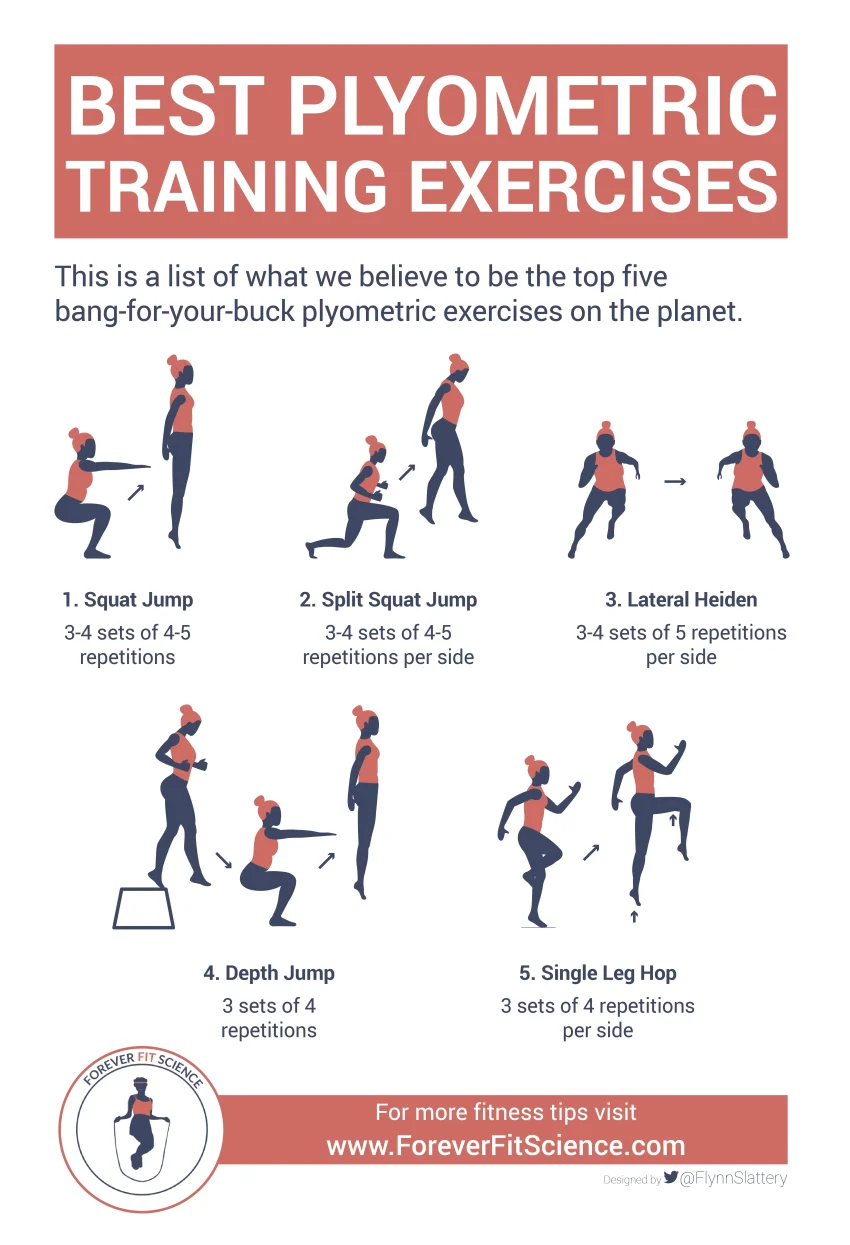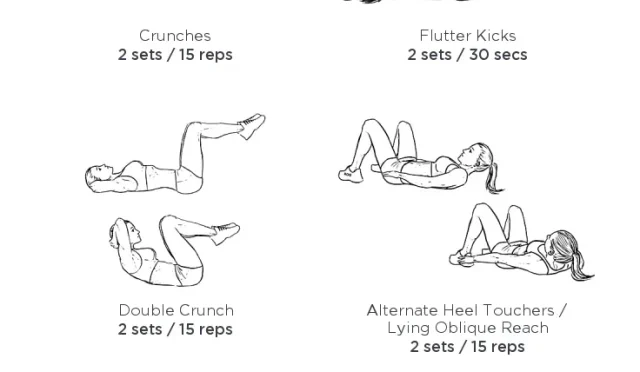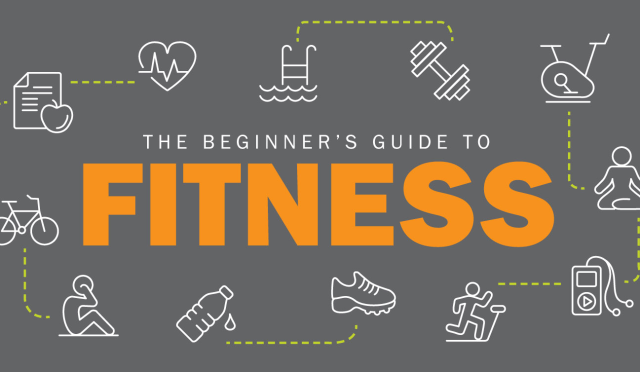Plyometrics: Transform Your Strength and Athleticism
Plyometrics are dynamic exercises designed to enhance athletic performance through explosive movements and quick transitions. By incorporating plyometric exercises into your routine, you can significantly improve your speed, power, and overall athleticism. Not only does plyometric training build muscular strength, but it also promotes injury prevention with plyometrics by conditioning your tendons and muscles to withstand the forces of high-impact activities. The benefits of plyometrics extend beyond elite athletes; anyone looking to elevate their fitness can experience a boost from a well-designed plyometric workout. As you engage in these drills, you’ll discover how they activate your muscles in unique ways, creating a powerful arsenal for any athletic endeavor.
Explosive training methods, often referred to as jump training or reactive strength training, focus on developing fast-twitch muscle fibers. These high-intensity movements engage both lower and upper body mechanics, promoting agility and coordination. Whether you’re incorporating jump drills into your warm-up or utilizing powerful throws as part of a broader fitness regimen, the principles of plyometric exercise remain central to enhancing athletic capabilities. Through this targeted approach, individuals not only build strength but also improve their body’s responsiveness to various physical demands. With the rise of interest in functional fitness, understanding the role of jump training and its effects on overall performance becomes increasingly valuable.
The Science Behind Plyometrics and Muscle Activation
Plyometrics serve as a powerful training method that enhances muscle activation and overall athletic performance. When performing exercises like box jumps or depth jumps, the muscles engage in a rapid stretch-shortening cycle that enhances their responsiveness. This cycle allows the athlete to harness the elastic energy stored in their tendons, creating explosive power upon takeoff. This phenomenon not only aids in competitive sports but also contributes significantly to general fitness by helping individuals tap into their latent strength capabilities efficiently.
Incorporating plyometric exercises into your workout routine can lead to improved neuromuscular coordination, which essentially boosts how well your nervous system communicates with your muscles. For instance, as you engage in a plyometric workout, not only are you engaging fast-twitch muscle fibers that contribute to strength and speed, but you are also training your body to react faster. This aspect is crucial for athletes who require quick reflexes and explosive movements on the field or court, transforming their overall athleticism through the sheer efficiency of muscle firing patterns.
Benefits of Plyometric Training for All Fitness Levels
Despite being historically associated with elite athletes, the benefits of plyometric training are accessible to fitness enthusiasts of any level. Regular incorporation of these exercises helps in developing superior strength, agility, and endurance, making them highly effective for improving athletic performance regardless of your starting point. Most notably, athletes who include plyometrics in their routines can experience dramatic improvements in vertical jump height and sprint speed, which are critical factors in sports such as basketball, soccer, and track.
Additionally, plyometric training fosters not only physical improvements but also mental resilience. The intense nature of these exercises challenges individuals’ comfort zones, pushing them towards greater achievements. Overcoming the hurdles presented by plyometric workouts builds mental toughness and confidence. This psychological benefit can create a positive reinforcement loop where the individual becomes more inclined to attempt challenging feats in the gym and daily life, thus enhancing their overall fitness journey.
Plyometric Exercises for Injury Prevention
One key area where plyometrics shine is in injury prevention. Common injuries, particularly in sports, are often linked to a lack of strength in the connective tissues, such as tendons and ligaments. By engaging in plyometric exercises, individuals can condition their tendons to adapt to high levels of stress and explosive movements. This training not only strengthens the ligaments but also significantly enhances the stability of the joints involved in activities like running and jumping.
Furthermore, plyometrics facilitate better muscle balance and coordination, reducing the risk of common injuries. As athletes develop greater power and control through plyometric workouts, they’re less likely to experience strains or sprains during unforeseen movements in their sports or daily activities. Incorporating exercises such as jump squats or box jumps into pre-training routines can effectively prepare the body for the demands of explosive sports, decreasing the likelihood of injury significantly.
How to Structure a Plyometric Workout
To maximize the benefits of plyometric exercises, it’s crucial to structure your workouts effectively. Start with a dynamic warm-up that prepares your muscles and joints for explosive movements, including dynamic stretches and lower-intensity plyometrics like mini-pogos. Next, focus on high-quality plyometric drills, limiting each set to five reps to maintain optimal performance. Exercises like the plyometric broad jump or hands-elevated push-up should be performed early in the session when energy levels are high, ensuring that form and explosiveness are prioritized.
Small breaks of around 90 seconds between sets allow for recovery, which is essential in maintaining effort and quality in each jump or throw. Gradually increasing the intensity and complexity of the drills over time will keep your muscles challenged and prevent plateauing. Ultimately, ensuring proper progression and recovery is vital in harnessing the powerful benefits of plyometrics safely and effectively.
Integrating Plyometric Drills into Daily Fitness Routines
Integrating plyometric drills into your regular fitness routine can easily enhance your training without overwhelming your current program. Begin by selecting low-impact exercises that will help you adapt to the demands of explosive movements. Simple introductions such as jump ropes or box jumps can be suitable starting points that will build confidence and strength before progressing to more demanding drills.
As you grow comfortable with these movements, increasing the frequency of plyometric exercises is recommended. Aim to incorporate plyometric workouts one to two times a week, focusing on different muscle groups each session. This strategy ensures comprehensive engagement of your body while allowing adequate recovery time between sessions, leading to continuous improvements in strength, agility, and coordination.
Explosive Movements: The Core of Plyometric Workouts
Explosive movements form the backbone of effective plyometric workouts. Whether it’s a powerful jump or a dynamic throw, these exercises harness the body’s natural kinetic energy to produce maximum output in minimal time. Popular explosive plyometrics like squat jumps and depth jumps not only challenge your muscles but also enhance cardiovascular endurance, making workouts more efficient as they combine strength training with a significant aerobic component.
Integrating various explosive movements within your plyometric routine can lead to improvements across multiple fitness domains. By alternating between exercises that focus on both vertical and horizontal explosiveness, you can engage different muscle fibers, allowing for comprehensive athletic development. This method encourages not just strength but also speed, resulting in a more well-rounded fitness capacity suitable for various sports and physical pursuits.
Plyometric Techniques for Enhanced Performance
Mastering the techniques of plyometric training is fundamental for achieving effective results without undue strain. Key to this is perfecting your form, as improper technique can lead to injury or reduced efficacy. Focus on ensuring a smooth transition in the stretch-shortening cycle; it’s about maximizing force upon landing and rapidly transitioning into the next jump. For instance, when performing broad jumps, remember to bend your knees and use your arms for momentum to propel your body higher and further.
Additionally, ensuring that you engage your core throughout all plyometric drills enhances stability and power generation. A strong core not only supports explosive movements but also protects your spine during high-impact activities. Thus, embedding core-focused exercises such as planks or medicine ball throws into your routine will complement your plyometric training, leading to improved performance and reduced risk of injuries.
The Role of Recovery in Plyometric Training
Recovery plays a crucial role in any training regimen, and it’s particularly significant in plyometric workouts due to their high-impact nature. Adequate recovery allows your muscles and tendons to repair and strengthen, preparing them for future sessions. Consider integrating rest days focused on low-impact activities, such as swimming or yoga, which can enhance flexibility and promote overall muscle recovery.
In addition to physical recovery, ensuring sufficient nutritional support is essential in maintaining energy levels and facilitating muscle repair post-workout. Consuming a balanced meal with lean proteins and carbohydrates after plyometric sessions will aid in recovery, enabling you to continue improving in your training. Integrating recovery strategies, such as foam rolling or stretching, will further empower your workout efficacy, allowing you to consistently engage in the explosive training plyometrics offer.
The Importance of Gradual Progression in Plyometric Training
When it comes to plyometric training, gradual progression is crucial for safety and efficacy. Beginners may experience overwhelming strains if they dive straight into high-intensity drills without proper conditioning. Start with foundational exercises, such as jump rope and mini-pogos, allowing your body to adjust to the explosive nature of this training before introducing more demanding movements like box jumps or plyometric push-ups.
As you build strength and confidence, subtly increase the intensity and complexity of your plyometric routines. Perhaps alternate days of high-impact drills with lower-intensity workouts to give your muscles time to adapt. This not only reduces the risk of injury but also ensures continued gains in strength, speed, and agility as your body adjusts to the unique demands of plyometric training.
Frequently Asked Questions
What are plyometric exercises and how can they benefit my training?
Plyometric exercises are explosive movements designed to improve your strength and athleticism by harnessing the elastic energy stored in your muscles and tendons. Incorporating plyometrics into your training routine can enhance your power output, agility, and overall physical resilience, making them beneficial for various activities, from sports to everyday tasks.
How can plyometric training reduce the risk of injury?
Plyometric training strengthens your muscles and tendons, which can help prevent injuries, especially when transitioning from strength training to sports. By training your body to handle explosive movements, you prepare your tendons for the demands of high-impact activities, reducing the likelihood of injuries such as Achilles tendon ruptures.
What does a basic plyometric workout look like for beginners?
For beginners, a basic plyometric workout should include low-intensity exercises like mini-pogos and plyo broad jumps. Start with a few sets of low-rep drills after your warm-up, gradually incorporating more advanced exercises like seated rotational med-ball throws as you build strength and confidence.
Are there specific plyometric exercises that are particularly effective for strength?
Yes! Effective plyometric exercises for building strength include the mini-pogo, plyo broad jump, and plyo hands-elevated pushup. These movements target large muscle groups, enhancing your explosive power and helping you lift heavier weights.
How often should I incorporate plyometric workouts into my training routine?
To reap the benefits of plyometric workouts, aim to perform them 1-2 times per week. Focus on quality over quantity—do a few high-intensity sets with ample rest in between to maximize your performance and recovery.
Can plyometric exercises improve my athletic performance?
Absolutely! Plyometric exercises are known to improve athletic performance by increasing explosive power, agility, and speed. This can be particularly advantageous for athletes in sports that require quick bursts of movement, such as basketball or soccer.
What precautions should I take when starting plyometric training?
When starting plyometric training, ensure you have a solid foundation of strength and mobility. Begin with low-intensity drills and prioritize proper form to avoid injuries. Avoid heavy weights and allow sufficient recovery time between sets to maximize effectiveness.
How long does it take to see results from plyometric training?
Results from plyometric training can vary based on individual fitness levels and experience. However, many individuals notice improvements in power and agility within a few weeks of consistent training, especially when integrating plyometrics into a well-rounded workout routine.
| Key Point | Details |
|---|---|
| Introduction of Plyometrics | Plyometrics involves explosive jumping and landing movements that originated in the 1960s, introduced by Russian coach Yuri Verkhoshansky. |
| Benefits of Plyometrics | Plyometric training improves power output, athleticism, and muscle strength, while also conditioning tendons to handle explosive forces. |
| Safety Considerations | Proper technique is crucial to avoid injuries. Beginners should start with low-intensity exercises and gradually increase intensity. |
| Recommended Exercises | Begin with mini-pogos, then progress to broad jumps, rotational throws, and hands-elevated pushups. |
| Dos and Don’ts | Maximize effort with quality reps, rest adequately, and avoid using heavy weights. |
Summary
Plyometrics is a powerful training method that can significantly enhance strength and athleticism for individuals of all levels. By incorporating explosive movements into workout routines, such as those introduced by coach Yuri Verkhoshansky, participants can improve their athletic performance while also bolstering their muscle and tendon strength. For both novice and experienced athletes alike, gradual integration of plyometric exercises, paired with a careful attention to technique, will ensure maximum benefits while minimizing the risk of injury. Embracing plyometrics could be the key to unlocking new heights in both athletic ability and overall health.








